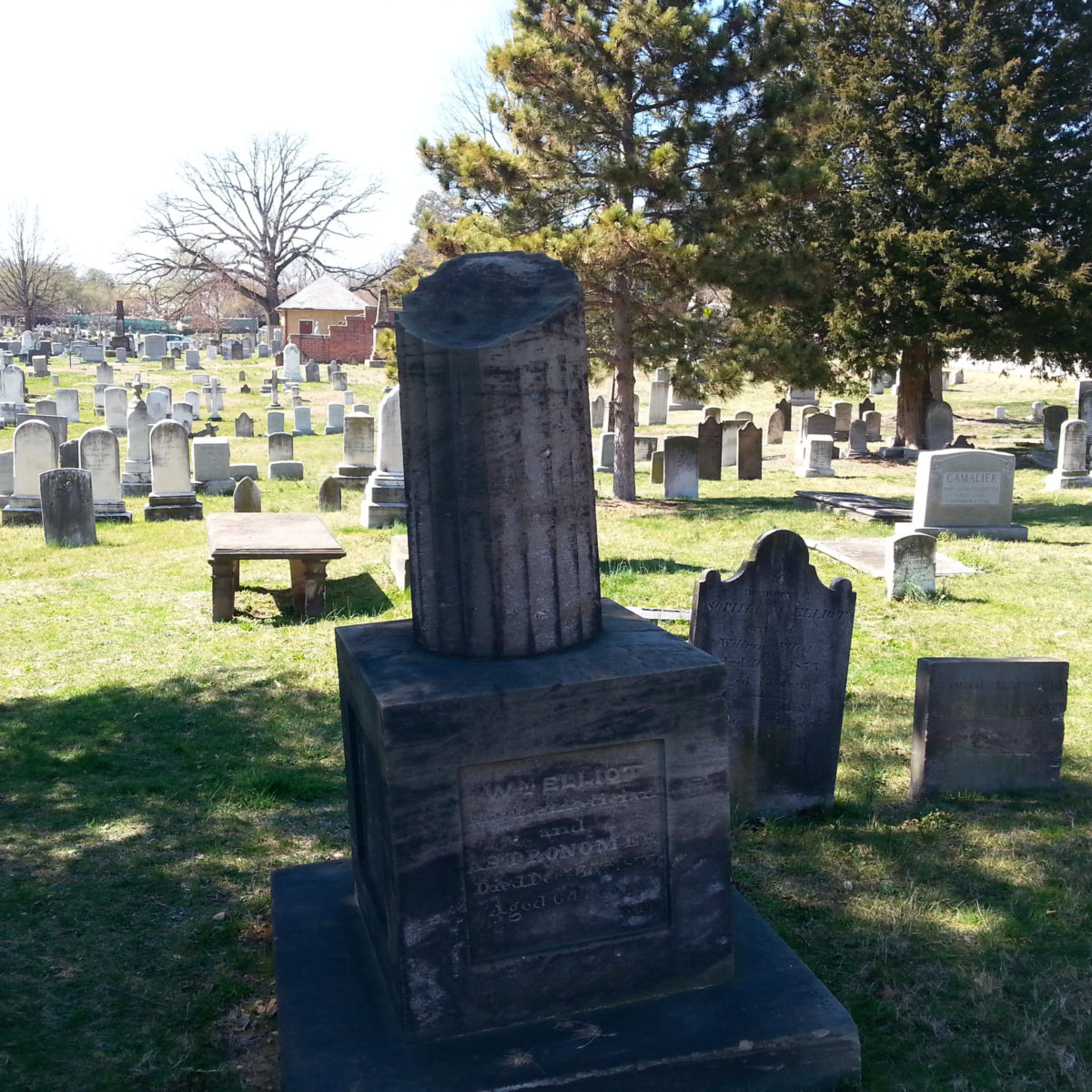Before the world went into its COVID-imposed lockdown, I discovered, quite by chance, while reading about Mary Ann Hall, that a photograph of my great-great-grandfather’s gravesite in Washington, DC’s Congressional Cemetery is on Wikipedia.
No one but me would care that, in the background of the photo, is the gravesite of William Gardner, but it’s there, I know it’s there, and the knowledge helped me to refine my annotated map of Congressional Cemetery. (I had the Gardner plot one tree to the north.)
During the lockdown, Congressional Cemetery has been livestreaming tours on Saturday mornings. Since you can’t visit in person, you can visit virtually. This has been good for me, because seeing the photograph on Wikipedia really made me want to visit Congressional Cemetery again.
A few weeks ago, the docent, in his tour of the cemetery, went by the Gardner plot, then circled back (after going to J. Edgar Hoover) to Mary Ann Hall, the 19th-century brothel owner. The sequence takes place between about 16:00 and 20:00 in the video below:
If you watch the video straight through from the beginning, the docent takes a somewhat random and circuitous path through the cemetery before he arrives at J. Edgar Hoover.
Oddly, I take much the same path when I visit.
The easy way to reach the Gardners at Congressional Cemetery would be this: go in the gate, walk toward the chapel straight ahead, turn left onto the brick path halfway to the chapel, take the brick path to the next paved street (Henderson Avenue, I believe), and the area where William T. Gardner is buried is about 45 degrees to your left, under a tree.
That’s the easy way.
I take the scenic route. I enter the gate, go past the office, and then take off to the left so I can see interesting things, like the stone tables and the eastern cenotaphs.
In the video, the docent, before he leaves the area of the cenotaphs to walk over to J. Edgar Hoover (and past the Gardners), he points to a memorial with a broken Greek column. “Oh, look at that. A life cut short.” And he moves on, without explaining anything about it.
That’s a favorite landmark of mine!
It belongs to William Elliott, astronomer and mathematician.

He’s unknown today, but he was responsible for the founding of the Naval Observatory. The Records of the Columbia Historical Society of Washington, DC has a brief biographical sketch of Elliott in their 1899 proceedings:
I desire to correct some imperfect statements lately appearing in public print, and for that reason I state, first, that a Mr. William Elliott, a civil engineer, emigrated from England in the year 1810 to the city of Washington, where he became known as a celebrated teacher of algebra and mathematics. He was appointed to a position in the Pension Office of the War Department, and being commissioned by the President of the United States to fix the longitude of the Capitol from Greenwich, England, on April 10, 1821, he resigned his position in the Pension Office on the 30th of that month, and completed his instrumental Celestial observations for the longitude on February 21, 1822. (Its calculations were made by Wm. Lambert.) He built a frame house for a private observatory at the rear of his dwelling in March, 1821, and on April 2, 1824, he was engaged running a meridian line to the north of his observatory. He was appointed surveyor of the city of Washington in 1832, and continued in that office till his death in 1837.
The first United States Naval Observatory was brought into existence chiefly by the efforts of the said Mr William Elliott. Lieut. L.M. Goldsborough, U.S.N., was the first officer who was placed in charge of that office in the Navy Department, in the year 1830. Lieut. Goldsborough was succeeded in that year by Lieut. Wilkes, U.S.N., who obtained permission from the Naval Commissioners to remove the Observatory office to a small frame building on a high elevation that was located at the rear of Mr William Elliott’s residence, No. 222 North Capitol street, situated on the west side between B and C streets, and N. 5 degrees 0 minutes W., 1,200 feet (nearly) from the center of the Capitol, being the same observatory as was built by Mr Elliott in March, 1824.
That’s not the most exciting stuff, but it’s interesting.
The slab headstone to the left of William Elliott’s in my photograph above is one of his (three?) wives. Elliott lived to be 64, so it’s hard to say that his life was “cut short” (the meaning of the broken column). And while he’s forgotten today, the observatory he helped to found — the Naval Observatory — remains an active observatory (though no longer in its original location).
I’m not sure when I’ll next get to Washington and visit Congressional Cemetery again. When I do, William Elliott, astronomer and mathematician, will still be there.